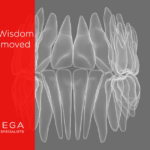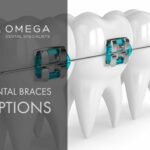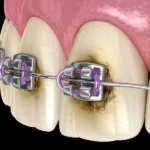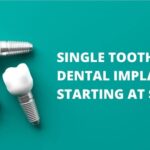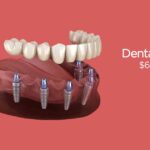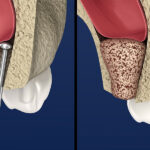What Is An Overdenture?
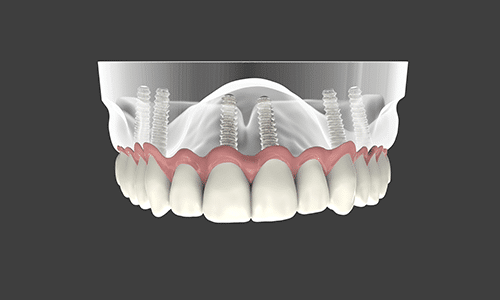
Whether you are contemplating conventional dentures as an alternative to an over-implant denture and their alternatives or are just looking for a way to improve the fit and function of your existing dentures, you may be wondering whether an implant-supported overdenture is a better option. These dentures have improved the oral health of many who were otherwise dissatisfied with their traditional dentures or tended to avoid wearing dentures altogether because of discomfort or a poor fit. Read on to learn more about the mechanics of an implant-supported denture, what to expect from the process, and how you may be able to benefit from this procedure.
Table of Contents
What is an implant-supported denture?
Unlike traditional dentures, which rest directly on the gums, implant-supported dentures (or “overdenture implants”) are, as the name implies, supported by dental implants. Rather than fitting onto your gums with glue, these dentures snap onto attachments on the dental implants. This provides them with far greater stability than traditional dentures while helping maintain the bone density in your jaw.
In most cases, these dentures (and their associated dental implants) are designed to be fitted to your lower jaw. This is primarily because lower dentures tend to be harder to fit; even in situations where upper dentures fit perfectly and are comfortable, lower dentures may often feel as though they’re about to fall out.
However, depending upon the stability of your upper dentures and the bone density of your upper jaw, you may have the option of implant-supported overdentures for your upper jaw as well. Your dentist can work with you to evaluate the various factors that may influence your likelihood of overdenture success.
Read on to learn more about the mechanics of an implant-supported denture, what to expect from the process, and how you may be able to benefit from this procedure.
Are Dental Implants More Effective Than Dentures?
Using dental implants to provide support for denture prostheses can offer distinct advantages compared to removable soft tissue-borne restoration use. A distinct reason for deciding to dental implant procedure to replace missing teeth is that it allows alveolar bone maintenance. The dental implant is inserted into the bone and can serve as a prosthetic device anchor and an excellent preventive maintenance procedure.
Strain and stresses can be applied to the bone adjacent to the implant, which can decrease trabeculation of bone that takes place to account for soft tissue variation. Dental implant types can be straight, flared, or anatomically inserted to assist in the soft tissue healing.
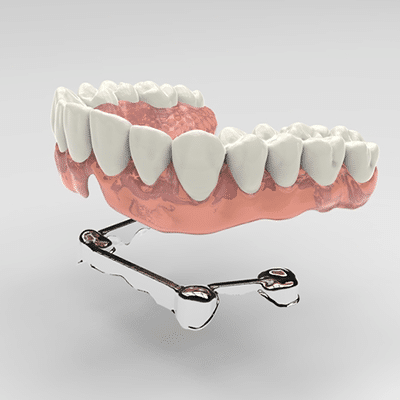
Are you a good candidate for an overdenture implant?
Having a dental implant placed can be a far more invasive process than a simple denture fitting, and not everyone is an ideal candidate for this procedure. Some of the factors that may influence whether your dentist recommends an overdenture implant include:
-
Your age and oral health
The younger and healthier you are at the time of your implant procedure, the better your odds of long-term success. Also, because some of the benefits of dental implants instead of dentures include retaining and improving bone density and the ability to exercise good nutritional habits, having this procedure performed at a relatively young age rather than jumping straight to traditional dentures can maintain your oral health for the long term.
Chronic conditions like diabetes, high blood pressure, and heart disease can also throw a wrench into your ability to recover from the dental implant process, although your dentist or prosthodontist is in the best position to assess the impact of any such conditions for your situation. In some cases, the benefit to your overall health from the implantation and overdenture fitting process outweighs the additional risks posed by outside health factors.
-
Your bone density
Because a dental implant relies on the strength of the bone in your jaw to hold it in place, eventually fusing the titanium post to your jaw bone in a process known as osseointegration, having sufficient bone density to support the implant is key to avoiding rejection–a situation in which the implant actually begins to work its way out of your jaw, eventually falling out entirely.
Fortunately, even those who have struggled to maintain bone density over the years may be able to build this bone back up by taking supplements or prescription bone-building medications before implant surgery.
-
Your health habits
Health-related habits like smoking, excessive drinking, and a poor diet can impact the success of dental implants. Smoking, in particular, can be contraindicated for dental implant candidates; the nicotine and other carcinogens in cigarettes restrict blood flow, impeding the healing of delicate gum tissue. Because tobacco is usually taken orally, it can have an even greater slow-healing impact on dental procedures than it does on other types of medical procedures.
You’ll also want to avoid excessive drinking and work on increasing your consumption of vitamin-rich foods like leafy greens, fruits, and vegetables during your recovery process. This will improve healing speed and reduce the risk of complications.
How is an overdenture implant installed?
There are two main kinds of over-denture: bar-retained and ball-retained. Both these implant-supported dentures require the placement of at least two and up to five dental implants, depending upon factors like the bone density in your jaw, the stability of your previous dentures, your overall health, and even your budget.
Bar-retained dentures utilize a thin metal bar that follows the curve of your jaw. This bar can then be affixed by clips or other attachments to the dental implants, helping secure the dentures in place until you’re ready to remove them.
Ball-retained or stud-attachment dentures rely on metal attachments affixed to each implant, rather than a separate bar, to hold the dentures in place. In most cases, the implant will have a “male” or “female” attachment that fits perfectly into the corresponding attachment on the denture, providing a sort of locking mechanism to ensure a secure fit.
Before these overdentures can be fitted or placed, you’ll need to have your dental implants installed. This process can take anywhere from several months to a year or more, depending upon the speed with which you heal and the number of implants that are being placed at once.
First, the prosthodontist will determine where the implants should be placed to provide maximum stability and security for your overdentures. A thin titanium bar will be surgically inserted deep into your jaw in each implant site and left to heal. You’ll usually be provided with temporary dentures (if you’re not already wearing dentures) to protect your gum and palate tissue from contact with these titanium bars.
After these bars have healed and begun to osseointegrate into your jaw bone, a second surgery will be scheduled. Your gums will be parted to reveal the heads of the titanium implants, and a healing cap will be installed on each; this helps guide your gums into the right position to allow the dental implant to break through and provide support to your overdenture.
Once you’ve healed from your second surgery, you’ll be ready to have your overdenture fitted and molded. This process can sometimes take several visits as the prosthodontist works with you to ensure that the denture has a perfect fit and comfortable feel.
The abutment is the part of the implant that supports the prosthesis or implant structure.> A structure is a framework fashioned from metal that attaches to the implant abutment so as to provide retention for many common prostheses. Categories of implant abutments are described by how the prosthesis or structure is attached to the abutment:
- A screw abutment to hold the prosthesis
- A dental cement abutment to hold a superstructure
- And, an attachment abutment is a device to hold a removable device or prosthesis
The abutment for cement/debris from invading the abutment area as it heals. After healing time that allows a supporting bone connection to form, a second stage is performed to allow the two-stage implant or attachment as the transepithelial portion (known as a permucosal extension since it places the implant above soft tissue and allows the development of a seal over the implant. This implant component has also been called a healing abutment time and uncovering surgery often uses this device for the initial soft tissue healing process to take place.
In the case of a one-stage procedure, the surgeon may have placed the permucosal extension at the time of implant insertion or may have selected an implant body design with sufficient height to be supragingival. In the case of immediate load, the permucosal healing abutment may not be used at all if a temporary prosthesis is delivered at the time of surgery or may be used until the following appointment when temporary teeth are placed. The extension is available in various heights and the surgeon rotates a threaded implant design into place.
A very soft bone may strip during a threaded implant insertion. This may result in lack of initial fixation, and the implant will not be rigid. A tapered cylinder implant may be pressed by hand into soft bone and can be initially fixated more easily. Implant rotation speed at the time of insertion and the force in implant insertion in soft bone are less relevant for some press-fit cylinders implants. The cylinder devices present good benefits for single-tooth applications if teeth adjacent have tall clinical crowns.
Thread extenders are needed for screw implant situations and as additional tools to insert the implant cover screw. In denser bone situations, cylinder systems can be placed with more ease and speed because bone tapping is not required. Most cylinder implants are smooth and require an increased surface coating for bone retention. When these materials are placed on an implant, the bone contact surface area can increase over 30 percentage points. The greater the functional surface area of the bone-implant contact, the better the support system for the prosthesis. A solid screw implant design is more often used. The thread may be V-shaped, buttress, reverse buttress or square (power thread) in design. The V-shaped screw has been clinically used for the longest time. Body designs come in in a variety of diameters depending upon various mechanical, esthetical, and anatomic requirements.
A solid screw implant body permits the osteotomy and placement of the implant in denser areas of cortical bone as well as in the trabecular portion of the bone area. The process can be modified to allow various extremes in the density of bone. The screw provides a way for the implant to be removed during the procedure if the placement isn’t believed to be best to employ. It also permits implant removal at second surgery if crestal bony contours aren’t adequate for long-term good results. The screw implant may be machined or roughened to increase functionality or to take advantage of biochemical properties of the surface coating.
What care and maintenance do your overdenture implants need?
Completing the overdenture implant and fitting process can feel like finishing a marathon compared with your initial denture fitting; however, the care and maintenance of overdentures is substantially similar to the care of traditional dentures.
Like traditional dentures, you’ll need to remove your overdentures each night to clean them and store them in a disinfectant solution. You’ll want to take special care to clean around the attachments, as food and bacteria can accumulate quickly without regular brushing and cleaning.
You’ll also want to keep an eye on the attachments or clips on your overdenture for signs of wear and tear. Over time, these components may require replacement as they become worn and less able to hold your overdenture in place securely.
By abiding by these care requirements, you’ll be able to enjoy your overdenture implants (and their improvement of your general appearance, health, and quality of life) for years to come.
What is the cost of dental implants?
Dental implant average cost is a topic we are able to help each patient learn. We strive to make treatment is available through financing and some payment options. Our team will work with you to make specific payment arrangements to fit your budget, and more information is available about financing to cover the costs associated with the treatment.
Whatever implant design and procedure is decided upon, your Omega Dental Specialists have all the latest training and information on which type of implant may work best for you. They will be happy to discuss the details of the processes planned and your decision-making is of prime concern as the clinical team undertakes its work to provide the most optimal care in each distinct patient’s case.

